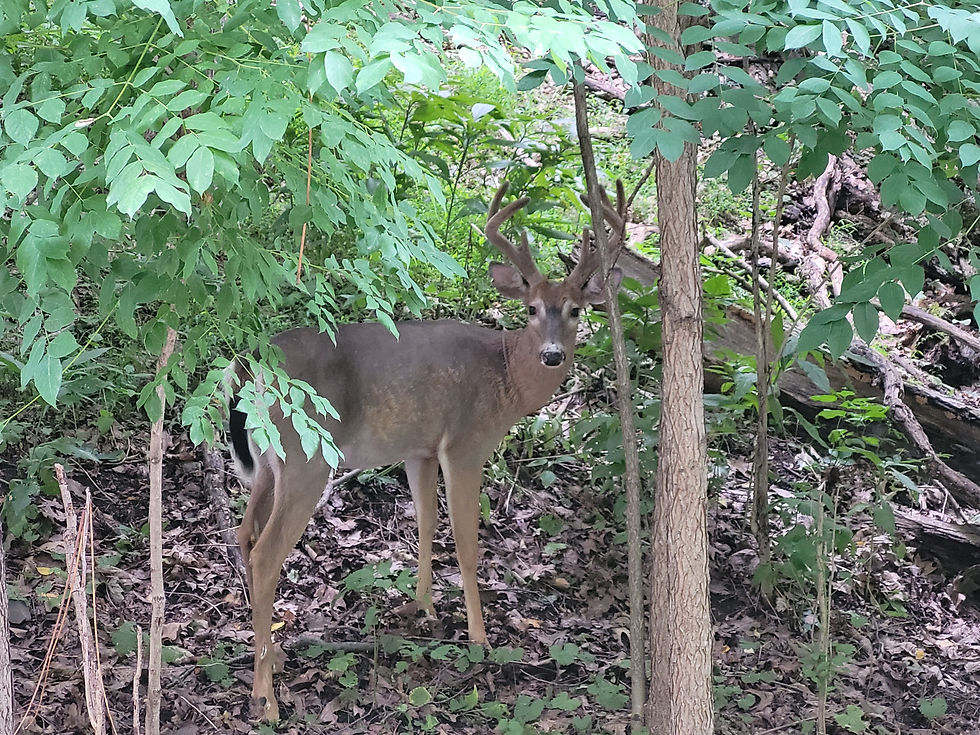Deer are cute, but they destroy gardens and can even cause landslides | The Homepage
- jmartinez5135
- Sep 30, 2022
- 3 min read
By Juliet Martinez

At the District 5 Democratic candidate forum in September, a question about how they would deal with deer infestation took some committee people by surprise.
“My phone started pinging,” said Ryan Herbinko, who helped develop the questions and was in the audience. “My fellow 31st Ward Committee members were all texting me, asking, ‘Is that your question?’”
Mr. Herbinko, a Democratic committee member and president of the 31st Ward Community Action Group, said the question puzzled folks in his part of the city. We spoke on the phone the next day.
“We’re more focused on just getting city services,” he said. “Just getting our streets cleared when it snows, just getting our streets paved.”
Bad for people, bad for deer
But Michele Finegold emailed me deer are everywhere in her neighborhood.
“I live a few houses away from Frick Park in Squirrel Hill, and many people in the area have had all or almost all of their plants devoured by deer,” she wrote in September. “I had to put a lot of mesh around my tomato plants to get the deer to stop chomping on them, and fortunately it worked.”
Ms. Feingold described deer invading residential yards to the point that some people build tall fences while others abandon gardening for flowers and vegetables altogether.
In August, CBS Pittsburgh reported that between 80 and 150 deer live in nearby Schenley Park.
University of Pittsburgh professor Walter Carson has studied deer in the parks for decades. He told CBS that deer populations have gone unchecked by predators or population control measures. The damage to Schenley, Riverview and Frick parks and others like them will eventually be irreversible.
Naturalist Kate St. John told CBS that the main plants left in Schenley park are invasives like saltgrass and grapevines that do not allow other plants deer forage on to grow.
"I don't know how long it will take for them to eat this to the point that there is nothing for them to eat, but that day will come, and they will either die or leave or both," Ms. St. John told CBS.
Browsing and causing landslides
When I spoke with Seth Mesoras of the Pennsylvania State Game Commission, he said the deer suffer most because there isn’t enough food for a large population, so some of them starve. Their hunger can make slopes more landslide prone.
“The problem with deer overpopulation is [that] they’re browsers,” the information and education supervisor for the southwest region told me when we spoke in September. “They’ll eat all the small trees and over time you’ll have no understory coming up. If you have steep hillsides, it can contribute to soil destabilization over time.”
He said the lack of root structure to hold the soil in place is one of several factors that can make landslides more of a risk. And there is only one way to address deer overpopulation.
“The number one way – really the only way – is through legalized hunting,” he said. Mr. Mesoras said he has set up archery hunts in municipalities and stressed that as long as a hunter is following all state hunting laws, in addition to any hunting limitations set by property owners, it is both legal and desirable to hunt deer. He said the alternative is killing the deer through a practice called culling.
“Otherwise culling, where you go in and kill the deer, nobody likes to see that,” he said.

.png)




Comments